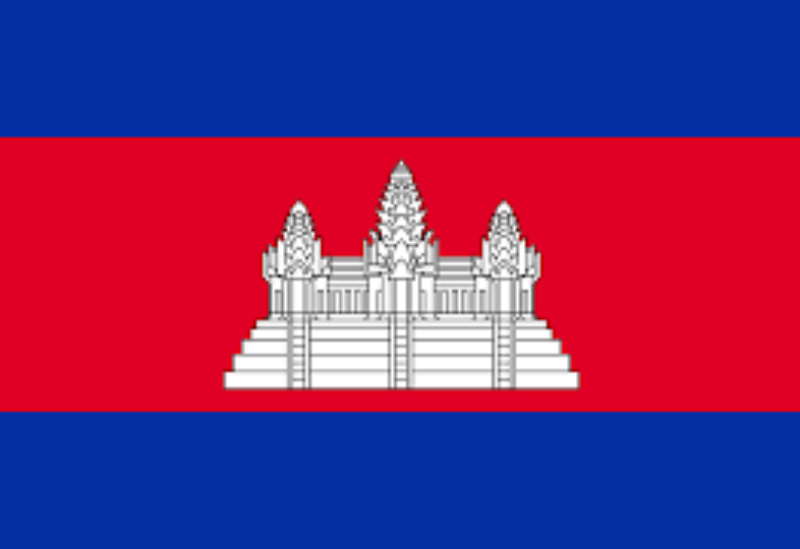
Cambodian flag
For the third year in a row at the end of August, water levels in Cambodia’s Tonle Sap hit historic lows according to the Mekong Dam Monitor, a cooperative effort by the Washington-based Stimson Center and Eyes on Earth.
While levels have started to creep up in the last week, they remain far below what they should be at this time of the year. Tonle Sap — Southeast Asia’s largest fresh water lake — ought to be full of water and fish.
“Once again, the Mekong’s wet season is experiencing anomalously low levels of rainfall,” Brian Eyler, director of the Southeast Asia program at the Stimson Center, told DW.
“To make things worse, data shows upstream dams are restricting as much water as they would hold back during a normal wet season,” Eyler said.
“Regardless of how much rain falls during the wet season, upstream dam restrictions are devastating for the Mekong’s ecological processes and the natural resources that come from the river upon which tens of millions rely,” he added.
Since early July, over 12 billion cubic meters of water have been withheld by 45 upstream dams, according to the Mekong Dam Monitor.
Climate change ‘disrupting’ Mekong
Every year during the June-October monsoon season, the Mekong river floods and reverses the flow of the Tonle Sap, replenishing the lake and drawing bountiful fish stocks into the lake system.
But lately this natural cycle has been delayed, hampering local farming and destroying fisheries.
“The recurring pattern of record lows in the Tonle Sap and parts of the Mekong basin over the past few years shows that Mekong is in crisis,” Pianporn Deetes, campaigns director at International Rivers, a conservation NGO, told DW.
“Climate change and large-scale dams are disrupting the timing and size of floods during the wet seasons, which are critical to sustaining the health of the Tonle Sap and the Mekong basin and the lives and livelihoods of millions of people,” she added.
Marc Goichot, WWF’s lead for freshwater in the Asia-Pacific region, attributes the cause of record low water levels to several factors, including changes of land use and changes in rainfall patterns brought about by the climate crisis. He also said the riverbed of the Mekong is losing elevation due to the combined effect of reservoirs behind dams trapping sediment and sand mining.
Regional food security at risk
Experts are concerned about the critical situation of an ecosystem vital to the lower Mekong river basin.
Seasonal inundations influenced by the Mekong River play a major role in Tonle Sap’s fisheries, Taber Hand, director of NGO Wetlands Work, told DW. They bring sediment-rich water which boosts microbial and fish production, as well as help reset the ecological system and maintains overall fish levels.
“The Mekong’s flood pulse brings water that inundates the huge floodplain making it a ‘wetland bouillabaisse,'” he said. “It is all about the flood pulse. Change it and everything else changes.”
According to Eyler, the annual flood pulse is needed to keep Tonle Sap functioning as the world’s largest inland fishery and to keep it providing nourishment to Cambodians, who derive up to 70% of their animal protein intake from the lake.
Without the wet season’s high water levels, the lake’s fish population drastically decreases and so does the annual catch.
“Many of those fish leave the lake at various times of the year to migrate to other parts of the Mekong in Thailand, Laos, and Vietnam, so a weak Tonle Sap is bad for regional food security outcomes,” Eyler said.